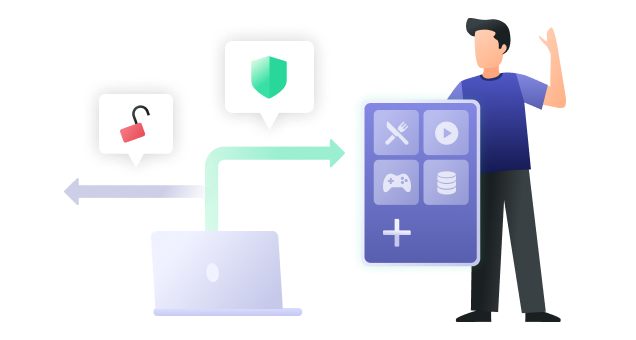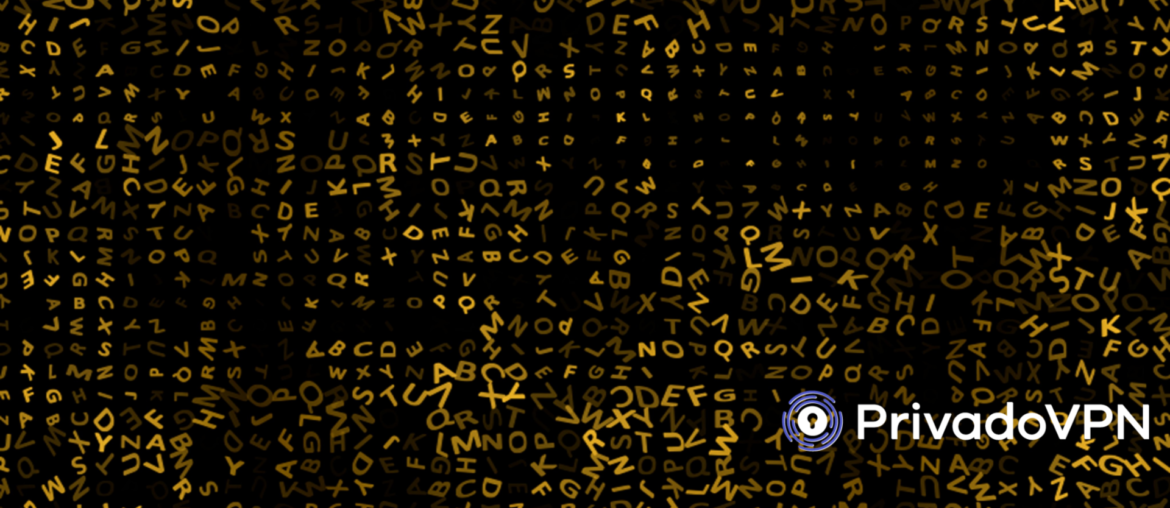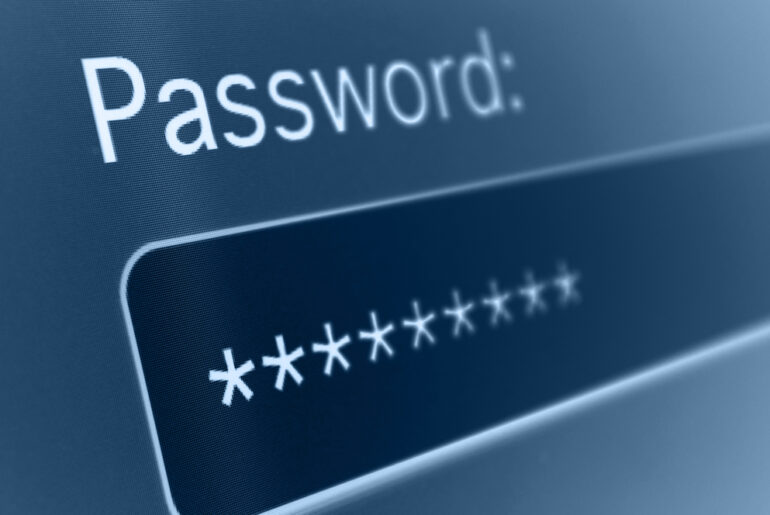You may not realize it, but you’ve probably already seen ciphertext several times. It’s a common and useful tool for computers, especially in the era of near-instantaneous communication. Ciphertext is part of how you can defend your identity and activity online.
What is Ciphertext?
Ciphertext is the opposite of plaintext and is what happens when you take regular typing and encrypt it. It’s important to note that ciphertext is not encryption. It is the result of encryption, in the same way that a meal is not “cooking,” but cooking is how you make a meal.
For a more direct example, imagine that we were encrypting this sentence and it looks like this:
Sbe n zber qverpg rknzcyr, vzntvar gung jr jrer rapelcgvat guvf fragrapr naq vg ybbxf yvxr guvf:
That was done with a simple ROT-13 cipher, which is a form of a Caesar cipher, developed in ancient Rome. It takes the alphabet and shifts all of the letters to 13 places. So “A” becomes “N”, “B” becomes “O,” etc. Plaintext is the original sentence and ciphertext is the sentence after all of the letters have been shifted. The encryption makes the sentence unreadable unless you know exactly how it was encrypted.
What Makes Ciphertext Useful?
If you have sensitive information that you need to transfer, ciphertext is key to protecting it. Because of how the Internet is built, it’s possible to watch and even intercept data in transit.
When you encrypt your data before sending it, any attempts to intercept it along the way will only show ciphertext. Without the right “key,” a hacker won’t actually be able to decipher what they’re seeing. It makes the data entirely unreadable.
You may not think that you necessarily need to use encryption because you’re not worried about your data being stolen. Maybe you even think you don’t have any valuable data. You may not realize just how vulnerable you are, however.
Do you use online banking? Without encryption, your username, password, and account information could fall into the wrong hands. In fact, there are lots of places on the Dark Web that provide lists of stolen usernames and passwords to be used by whoever can find them.
Decryption Keys
We mentioned above that without the right “key,” it’s impossible to decipher the text. “Keys” are the rules for encryption and decryption that computers follow when they’re sharing data. The most common keys are part of “asymmetric encryption”, a cipher where two keys are used. There is a public key that is exchanged between computers so they know the rules for encoding data, and there are private keys that are not transferred online and can only decode data.
So, for example, the website you’re accessing would encrypt the data with the public key that it got from your computer, turning the plaintext of the site into ciphertext. It would then send the ciphertext to your computer, which uses its own private key to decrypt it back into plaintext. This process happens many times in both directions.

Types of Cipher
There are several different types of cipher, each with its own benefits. In the broadest sense, however, all ciphers are either block ciphers or stream ciphers.
Block Ciphers
Block ciphers work by encrypting data in “blocks” of ciphertext. A block is a package of information of a specific, predetermined size. These blocks are packaged together and sent one at a time to the receiving computer. Depending on the VPN protocol that you use, you may even have to wait for every block to be verified before another can be sent.
Some of the most common are AES, DES, and 3DES. Block ciphers are usually used by VPNs (like PrivadoVPN), governments, and corporations to keep secure data from leaking in transit. Because it has never been broken, AES block cipher encryption makes it easy to keep your personal information safe.
Stream Ciphers
Stream Ciphers like Salsa20, FISH, and Chameleon are less common these days, but still around. Instead of encrypting data and packaging it into blocks, stream ciphers encrypt data in long streams. Instead of using two keys like asymmetric encryption, it creates a pseudorandom cipher digital stream, also called a “keystream.”
Stream ciphers are not as secure as block ciphers, but are much faster and can be useful for background processes, like encrypting wireless connections.

How Ciphertext Attacks Work
There are two approaches to trying to break the encryption on ciphertext: cryptanalysis and brute-force attacks.
Since data can be thousands upon thousands of lines of code, it’s generally easier for hackers to attempt to crack the key, which would open up the whole message, rather than the text itself.
Cryptanalysis
The objective of a cryptanalyst is to look for weaknesses in a specific cipher that can be used to identify the key. Ciphers are created by people and are therefore imperfect. Cryptanalysis looks for flaws in the system that can give the hacker clues as to what the key might be. By narrowing the choices, or even finding out exactly how the key is determined, reading the ciphertext becomes much easier.
Of course, the problem with cryptanalysis is that it can be incredibly difficult to find flaws in an encryption cipher before the people maintaining it or bug bounty hunters (white hat hackers who make money finding flaws in systems) identify and fix them. There’s a reason why a highly maintained cipher like AES hasn’t been broken.
Brute-force Attacks
These are much more common, but a lot less effective than cryptanalysis. The idea is to try every potential combination of digits that could be the key and look for plaintext results. A computer can do this with dozens of permutations every second.
However, even with that sort of power, it’s functionally impossible to actually break. The world’s fastest computer would take 27,337,893,038,406,611,194,430,009,974,922,940,323,611,067,429,756,962,487 years to break 256-bit encryption like the kind we use by brute force. Put another way: 27,337,893 trillion trillion trillion trillion years, give or take.

Why You Should Be Using Encryption
Turning your valuable data into ciphertext is crucial to keeping yourself safe online. Whether it’s at home or out and about, there are countless ways to intercept your Internet activity. Strong encryption can create ciphertext so impenetrable that your data is safe from almost any attack.
Using a VPN can give you enhanced encryption protection from anywhere in the world. In addition to the security provided by advanced encryption protocols, a reliable VPN can also give you more privacy and fewer content restrictions.
PrivadoVPN makes it easy for you to access the Internet the way that you want to: freely. Our secure servers, premium network, and user-friendly app combine to give you instant connections to virtual locations all over the globe. There’s no better way to get the privacy, security, and access that you deserve than with PrivadoVPN. Sign up today!
Download PrivadoVPN
Protect your privacy with a world-class VPN. Sign up for premium access to PrivadoVPN and get unlimited monthly data, access to 300+ servers from around the world, and up to 10 simultaneous connections. Get a top-rated VPN that can secure your privacy at home, at work, or on the go.
Sign up for PrivadoVPN today!




